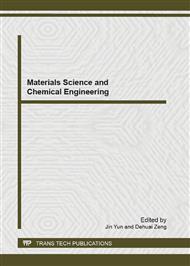p.572
p.578
p.584
p.590
p.596
p.606
p.612
p.616
p.620
Corrosion Behavior of Construction Materials for Intermediate Temperature Steam Electrolysers
Abstract:
Different corrosion resistant stainless steels, nickel-based alloys, pure nickel, Ta-coated stainless steel (AISI 316L), niobium, platinum and gold rods were evaluated as possible materials for use in the intermediate temperature (200-400 °C) acidic water electrolysers. The corrosion resistance was measured under simulated conditions (molten KH2PO4) corresponding to the proton-conducting solid acids or transition metal phosphates as electrolytes. It was shown that, unlike at temperatures below 200 °C, gold is unstable with respect to corrosion in molten KH2PO4. Platinum demonstrated high corrosion resistance and the anodic and cathodic limits were for the first time found for the electrolyte. Nickel, niobium, Inconel®625, Hastelloy®C-276 and Ta-coated stainless steel (AISI 316L) demonstrated high corrosion stability and can be recommended as construction materials for bipolar plates.
Info:
Periodical:
Pages:
596-605
Citation:
Online since:
May 2013
Price:
Сopyright:
© 2013 Trans Tech Publications Ltd. All Rights Reserved
Share:
Citation:


